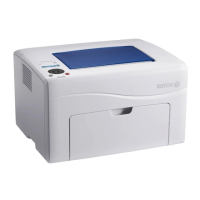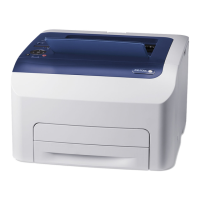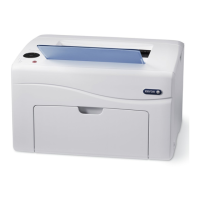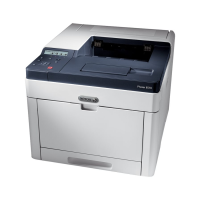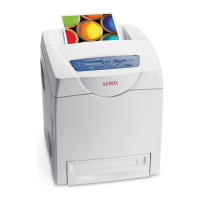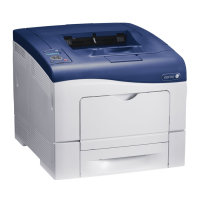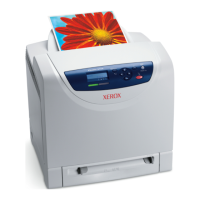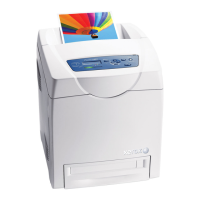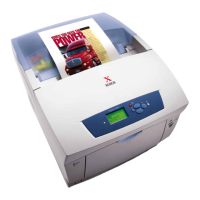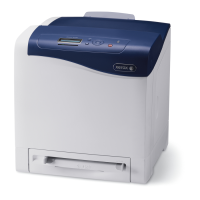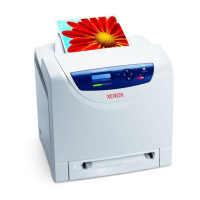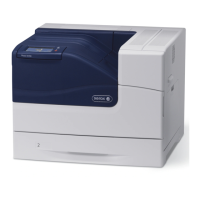Phaser 6000/6010 and WC 6015 MFP Xerox Internal Use Only 2-67
Theory of Operation
Fuser Control
Fuser Temperature Control
To control the Fuser temperature, the target temperature is set, and then the heat
lamp is turned on/off so that the surface temperature of the heat roller satisfies
the target value.
The surface temperature of the heat roller is detected by a thermistor. When the
temperature detected is higher than the target value, the heat lamp is turned Off.
When the temperature is below the target value, the heat lamp is turned On.
However, the sensor may detect a temperature lower than the actual value when
an error occurs during the temperature detection. To prevent the heat lamp from
overheating, the heat lamp is turned off unless warm-up is completed within the
specified time.
The target temperature varies depending on the printer status such as warm-up,
printing, or process control, and is calibrated according to the interior temperature
detected by the environmental sensor, the temperature difference between the
middle and the ends of the heat roller, the printing mode, and the input power
supply voltage.
Cooling Down
As the printing continues, the temperature of the heat roller becomes nonuniform
between the area that contacts the sheet and the area that does not. When this
happens the paper feeding is suspended for a certain duration to compensate for
the temperature non uniformity of the heat roller. This is called “Cooling Down”.
When the temperature of the heat roller end is high, cooling down is performed to
lower the temperature to the target value.
Sensor Warm-up
The thermistor loses its measuring accuracy when the temperature of the sensor
itself is -5°C or below. Therefore, the sensor is warmed up to 0°C when its
temperature is -5°C or below. This is called “Sensor Warm-up”.
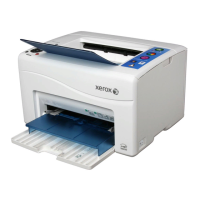
